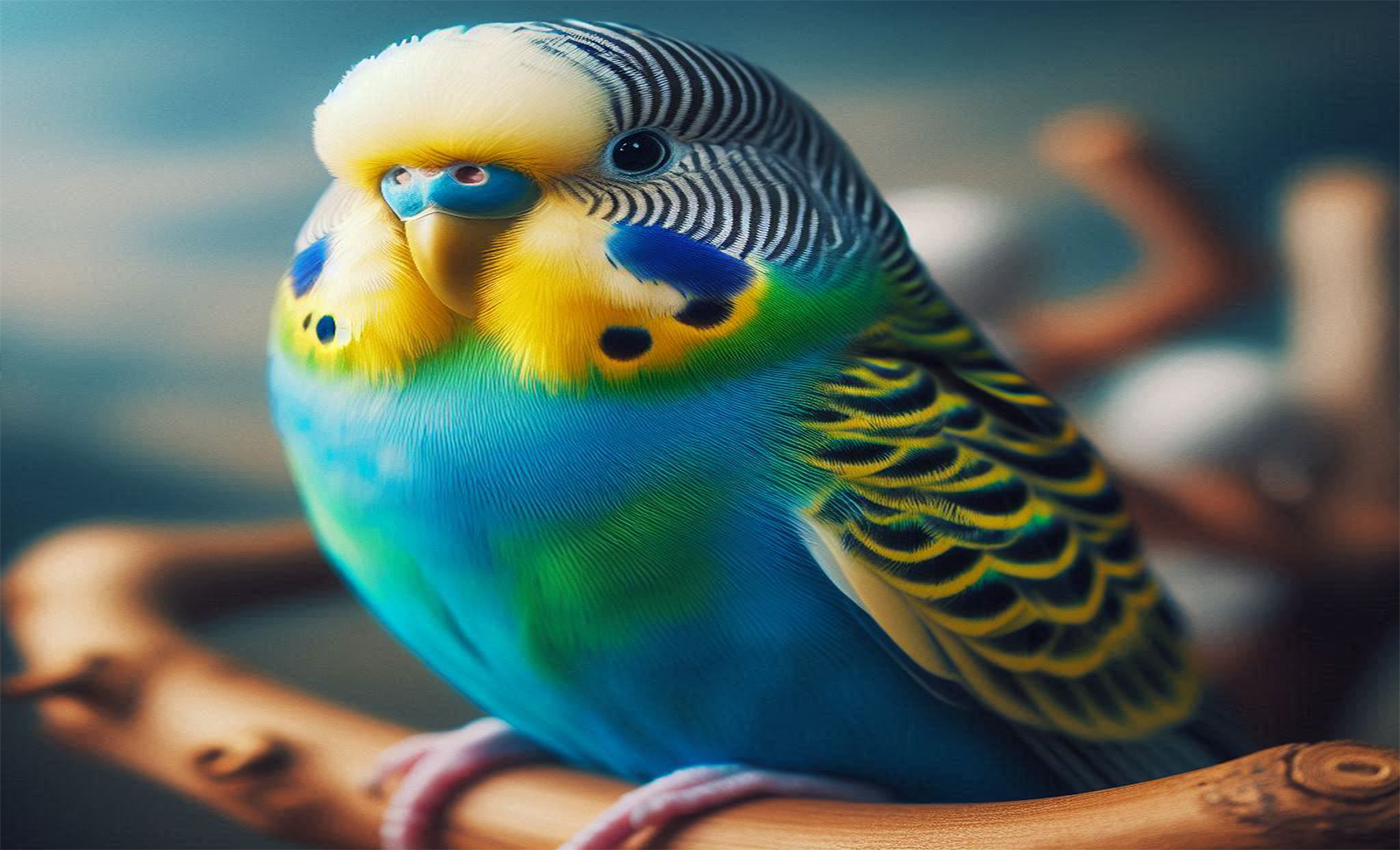The Budgerigar Parrot: A Beloved Companion

Physical Characteristics
Size and Appearance
Budgerigars are small parrots, measuring approximately 7 inches in length. They have a slender body structure and are predominantly green in the wild. However, through selective breeding, a variety of color mutations have emerged, including blue, yellow, and white, making them a colorful addition to any household.
Natural Habitat
Origin and Behavior in the Wild
In their native Australia, Budgerigars inhabit arid regions, open woodlands, and grasslands. They are social birds, often found in large flocks, where they forage for seeds, grasses, and occasional insects. Their nomadic lifestyle allows them to adapt well to varying environmental conditions.
Characteristics in Captivity
Adaptability and Sociability
Budgerigars are renowned for their adaptability to captivity. They quickly acclimate to new environments and bond closely with their owners. Their playful and energetic nature makes them delightful companions, particularly for those seeking interactive and entertaining pets.
Gender Differences in Learning and Mimicry
Male Budgerigars are generally considered better candidates for speech training due to their willingness to mimic sounds and words. They often learn to repeat phrases with a clear and pleasant voice. Surprisingly, female Budgerigars tend to articulate learned words more distinctly over time, showcasing their own unique capabilities in mimicry.
Care Requirements
Housing and Cage Setup
Cage Size and Design
Provide a spacious cage with horizontal bars to facilitate climbing and exercise. The minimum cage dimensions should be around 18 inches long, 18 inches wide, and 18 inches high for a single Budgerigar. However, larger cages are always recommended to allow for more freedom of movement.
Cage Essentials
- Perches: Include multiple perches of varying thickness to promote foot health and exercise.
- Toys: Offer a variety of toys, such as mirrors, bells, and chewable items, to keep your Budgerigar mentally stimulated.
- Feeding Dishes: Provide separate dishes for dry and fresh food, ensuring they are easily accessible and regularly cleaned.
Diet and Nutrition
A balanced diet is crucial for the health of Budgerigars. Their diet should consist of high-quality seed mixes supplemented with fresh vegetables and occasional fruits. Avoid feeding them avocado, chocolate, caffeine, and alcohol, as these are toxic to birds. Fresh water should be available at all times.
Social Interaction and Enrichment
Budgerigars thrive on social interaction with their owners. Spend time talking to and playing with your Budgerigar daily to strengthen your bond. They enjoy flying and exploring outside of their cage in a safe and supervised environment.
Health and Hygiene
Maintain a clean environment by regularly cleaning the cage and accessories. Monitor your Budgerigar for signs of illness, such as changes in behavior, appetite, or droppings. Seek veterinary care if you notice any abnormalities to ensure prompt treatment.
Training and Speech Development
Training Tips
Start training sessions early and keep them short and engaging. Use positive reinforcement, such as treats and praise, to encourage desired behaviors like stepping up onto your finger or repeating simple words.
Speech and Mimicry
Budgerigars are capable of learning to mimic human speech and sounds. While not all Budgerigars will develop extensive vocabularies, many can learn to repeat words and short phrases with practice and patience. Consistent interaction and repetition are key to their learning process.
Common FAQs
1. Can Budgerigars learn to talk?
Yes, Budgerigars have the ability to learn and mimic human speech. With consistent training and interaction, they can develop a repertoire of words and phrases.
2. What is the lifespan of a Budgerigar?
Budgerigars have an average lifespan of 5 to 10 years, though with proper care, they can live up to 15 years or longer.
3. How do I know if my Budgerigar is healthy?
A healthy Budgerigar will have bright eyes, smooth feathers, and be active and alert. Monitor their droppings for any changes in color or consistency, which can indicate health issues.
4. What kind of toys do Budgerigars enjoy?
Budgerigars enjoy toys that encourage exploration and mental stimulation, such as mirrors, bells, and toys they can chew on. Rotate toys regularly to keep them engaged.
5. Are Budgerigars suitable for beginners?
Yes, Budgerigars are often recommended for beginner bird owners due to their small size, playful nature, and adaptability to captivity. They are relatively easy to care for with proper guidance and attention.
Conclusion
Budgerigars, or Wavy Parrots, are cherished companions known for their intelligence, vibrant colors, and ability to mimic speech. By providing a stimulating environment, a nutritious diet, regular social interaction, and patient training, you can ensure a fulfilling life for your Budgerigar. Whether you are new to bird ownership or an experienced enthusiast, Budgerigars bring joy and companionship to households worldwide.
Post Comment